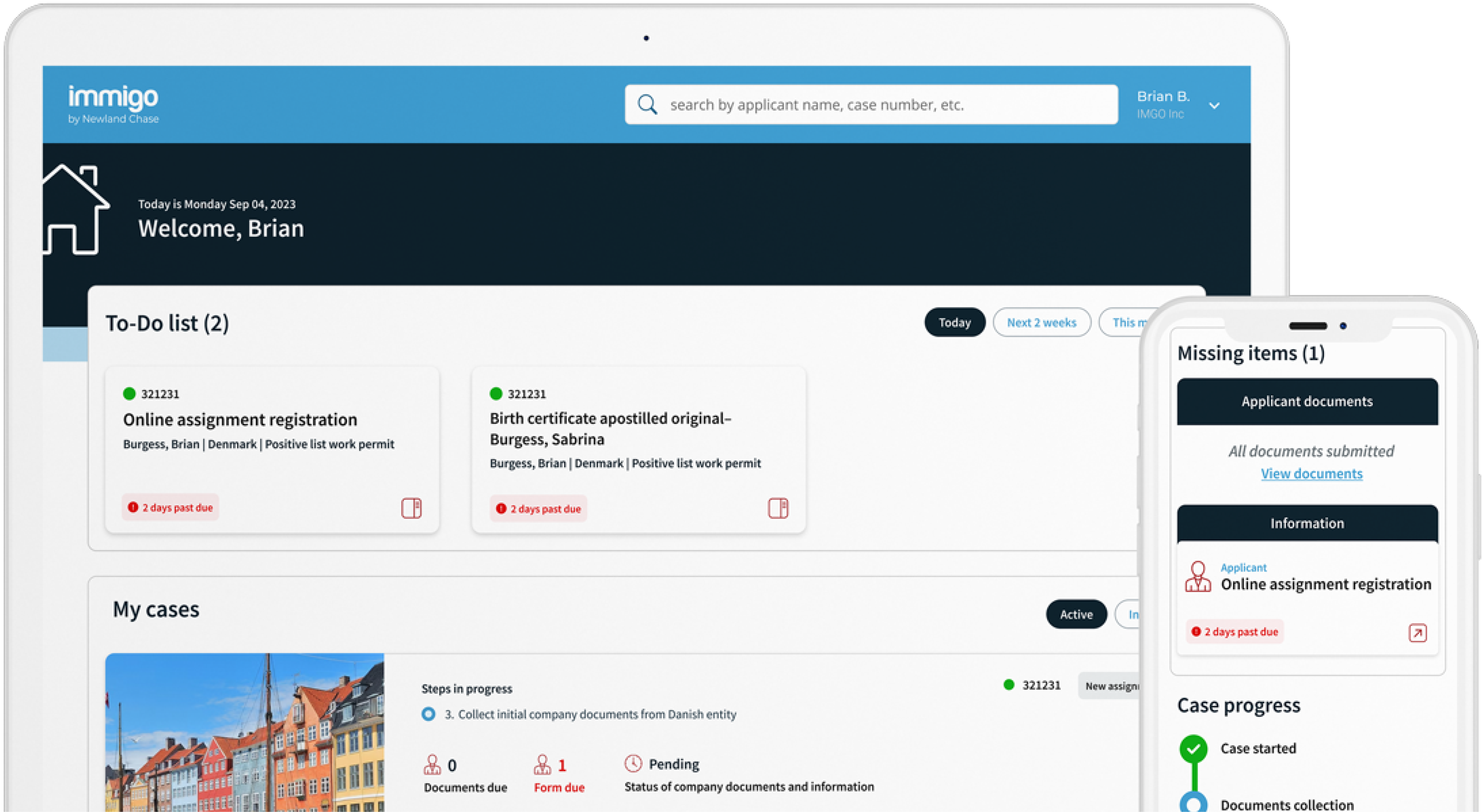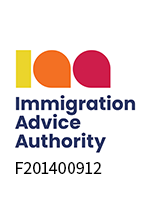Get The Visibility Your Company Needs
Reduce compliance risks and mobility costs while managing individual and project-related travel with ImmiSMART: the solution that unifies your travel and mobility programs.
6 Common Misconceptions about Short Term Travel in Europe
February 6, 2024
By: Carlijn Langeveld, Advisory Services Manager at Newland Chase, a CIBT company
As the world’s largest economic region, and home to many of the highest scoring countries for quality of life and general well-being, Europe attracts foreign workers and business visitors from all over the world. In addition, its rich cultural heritage and diverse natural landscapes position the region as the global leader for tourism.
Most European countries have either joined the European Union (EU)¹ and/or the European Economic Area (EEA)², or have applied for membership of the EU. Between the EU and EEA countries, and to a lesser extent, Switzerland, there exists freedom of movement of capital, goods, persons, and services. This provides for some interesting options for cross border travel and work within the region (hereafter referred to as EU+), both for nationals of these countries as well as nationals from the rest of the world—so-called third-country nationals (TCNs).
The EU+ countries, with the exception of Bulgaria, Cyprus, Ireland and Romania, have also joined together to create the Schengen Area³—a single travel area within which generally no border controls take place⁴.
However, the cooperation between these countries also comes with limitations, which are often unknown or misunderstood by employers and their employees, and visitors generally. In this article we address some of the most common misconceptions about short-term travel within Europe from abroad.
Misconception 1: One visa allows travel to all European countries
The countries which form the Schengen area have defined a common list of third country nationalities who are visa-exempt for a cumulative stay up to 90 days in each rolling 180 days period (90/180 days, in short) in the whole of Schengen⁵. Nationalities not included in the visa-exempt list will require a so-called Schengen C visa for such short stays, which can be issued as Single Entry for one specific trip, Double Entry for two specific trips or (after having compliantly travelled on one or both of these several times) Multiple Entry within a longer period. Such Schengen C visas upon entry generally allow travel throughout the whole of the Schengen area (with border crossings within Schengen not being considered separate entries). The maximum allowed stay on a Schengen C visa can also be up to 90/180 days but is subject to the validity duration approved by the consulate.
Therefore, while one visa can indeed facilitate travel to many European countries, Bulgaria, Cyprus, Ireland and Romania, although part of EU and EEA, are not part of Schengen and therefore have their own visitor visas. Bulgaria, Cyprus and Romania do allow travel for Schengen visa holders to some extent, but the Schengen visa cannot be obtained through their consulates, and their national visas do not allow travel to Schengen. All other European countries outside of these four also have their individual visas which cannot be used for international travel within Schengen or the rest of Europe.
Misconception 2: A visa-exempt stay in Schengen can be extended by obtaining a Schengen visa or a second passport
Many travellers who are exempt from requiring a Schengen visa incorrectly believe that if they want to stay longer than the 90/180 days, they will simply be able to apply for a Schengen visa when nearing the maximum allowed period of stay. In fact, it is generally not possible for exempt nationals to obtain a Schengen C visa at all.
There are some circumstances in which a Schengen visa waiver national would require a special Schengen C visa (most commonly if the individual wants to work for a short period in certain countries), but in such scenarios the time spent on that special Schengen C visa will still count towards the 90/180 days stay limit. (Stays on a special C visa will be counted together with the visa free stay).
Obtaining a second passport does not extend the allowed stay beyond 90/180 days. This restriction applies per person, not per passport.
The only way to obtain authorisation for a stay of longer than 90/180 days in Schengen is to obtain long term residence authorisation in a specific country (either through a residence permit or the equivalent Schengen long stay D visa for that country), in which case stay in that country only will no longer count towards the 90/180 days restriction. However, such residence authorisation can generally only be obtained if the planned stay in that country is more than 90/180 days, and in most cases requires a company sponsoring the permit for work related reasons, as well as having a residential address in the country.
Therefore, it is crucial for frequent travellers to Schengen to plan their trips as far in advance as possible, and to keep close track of all dates of stay in Schengen (including dates of arrival and departure, no matter how short the stay). This should include not only dates travelled for work—personal stays in Schengen will also need to be counted.
If travel is planned by someone else (e.g. a project manager), then those personal dates of stay in Schengen will need to be shared with them. The European Commission has created a Schengen calculator which allows you to verify that planned travel is within the allowable limit: https://ec.europa.eu/assets/home/visa-calculator/calculator.htm?lang=en⁶
Misconception 3: Visa exempt stay allows work
Many people refer generally to immigration documentation as “visa requirements”. This may be because there are a few well known countries in the world where work and residence authorisation are both issued in the form of a visa, most notably the USA. However, in most countries a visa only allows its holder, subject to the border control officer’s discretion, to enter a country for a pre-determined period. In most countries, work authorisations and long term residence authorisations are issued through separate documents, most commonly work and residence permits (potentially combined in a single permit). For this reason, it is better to refer to “immigration requirements”.
Due to the incorrect use of the term “visa requirements”, people could incorrectly assume that if they are visa exempt for a short stay in Schengen (or another country or region), that this means that they are authorised to carry out working activities on this visa free status as well.
However, generally this is not allowed, and activities should be strictly limited to activities such as tourism, visiting family and friends, and any activities recognised as business in the specific host country.
The same restrictions apply for people travelling on a Schengen C visa as for visa waiver nationals (unless, in either case, additional work authorisation has been obtained). Furthermore, if the activities are considered work, then other requirements, such as a Posted Worker Notification and related obligations, may also apply.
A special note for British nationals: although the EU and the UK negotiated a Trade and Cooperation Agreement⁷ (TCA), this agreement does not in general allow work to be carried out by British nationals in the EU (or vice versa). The TCA does contain a list with some activities that should be allowed on business status which otherwise tend to be considered work, however, some of these activities are open to different interpretations. In addition, some non-conforming measures have been included by some of the EU member states, which means that it has been agreed for them still not to allow some of those activities without a work permit, or for them to add additional restrictions to the activities for them to be allowable on business status. Posted Worker obligations may also still apply, even if the activity is work permit exempt.
Misconception 4: All countries in Europe allow the same activities on business status
Although there is a lot of cooperation between European states, this in general does not include a common list of allowed activities on business status. Many countries do not even themselves have a clear definition of what business activities are, so there are a lot of grey areas.
Therefore, whenever travelling abroad for work related reasons, even if it is only for one or a few days, it is always important to verify if the planned activities are allowed on business status or would potentially require work authorisation. Companies that have many frequent travellers could benefit from a robust assessment tool, to obtain visibility and ensure their employees are travelling compliantly.
However, apart from the aforementioned TCA business-allowed activities for British nationals, there is one other exception: the EU Blue Card Directive (2021/1883)⁸ contains a list of activities which EU Blue Card holders should be allowed to carry out when travelling on their Blue Card for business to other EU states: attending internal or external business meetings, attending conferences or seminars, negotiating business deals, undertaking sales or marketing activities, exploring business opportunities, or attending and receiving training. That said, new Directive, although officially due to be implemented into national legislations by 18 November 2023, has not been implemented yet in most EU countries. In addition, some of the activities as included in the list above are still subject to multiple possible interpretations. Therefore, it is expected that there will remain differences in what will be allowed for EU Blue Card holders when travelling on business to other EU countries.
Misconception 5: You can choose where to apply for a Schengen visa
Although a Schengen C visa, once issued, can in most cases be used to travel throughout the Schengen area, this does not mean that you can freely choose through which country’s consulate you want to apply for the visa. Instead, the visa needs to be obtained through a consulate of the country of main destination. In case the person is planning to travel to multiple countries, then in principle, the country where the person will stay the longest is considered the main destination. If stay will be equally long, then the country of first entry into the Schengen area has jurisdiction. Note that if multiple destinations are known at the time of visa application, supporting documentation regarding all those destinations will need to be provided.
Furthermore, a person needs to apply at the consulate with jurisdiction over their country of nationality or country of residence (which in some low volume locations can actually be in another country). Within that country there may be multiple consulates and/or visa application centres representing the same Schengen country.
Often then one consulate/visa application centre will have jurisdiction based on city of residence, although some Schengen states may allow applications to be filed at any of their representations within a specific country.
Preparations are currently being made to move the Schengen application process to one unified online system. Although this online system is planned to be implemented within the next few years, the current experience of continuing delays in the implementation of two other travel related digitalisation efforts (ETIAS travel authorisation for visa exempt nationals and the Entry and Exit System-EES) may cast doubt on whether such short timeline will be met.
Misconception 6: You can apply for a tourism visa to carry out business activities
Schengen C visas can be issued for different purposes, most commonly tourism and business, each of which require different types of supporting documents. Furthermore, different countries can issue different visa types. For example, Switzerland has a separate Schengen C visa category for visiting family, while many other countries may include this in the more generic tourism visa type.
The visas are sometimes issued with a remark from the issuing Schengen country regarding the purpose for which the visa has been issued. However, if the visa is issued for Multiple Entry (not to be confused with a Double Entry visa), then the visa can also be used for a purpose other than the one indicated in the Remark (if that type of activity is allowed on a visitor status by the host country). This means that, for example, a visa with the remark of tourism can be used for a business visit. However, this does not mean that you can apply for a Tourism Schengen C visa, if the purpose of obtaining the visa is to carry out business activities.
At time of application for a Schengen C visa, it is mandatory to provide information and documentation related to all planned visits at that time, and all information needs to be accurate at that time (for example, it is not permitted to use dummy hotel reservations).
This means that if, at the time of application, you have already planned a specific business visit, you will need to submit supporting documentation related to that business visit and apply for a business visa. Not doing so may be considered fraud.
However, if you currently only have tourism activities planned, then you can apply for a tourism visa with related supporting documents. If the issued validity allows, you can then later use that visa for a later planned business visit as well.
If using a visa with a remark referring to a different purpose, it is advisable to bring some proof that you have initially travelled for the purpose for which the visa was issued. In the event that the initial trip for which the visa was obtained was cancelled, then documentation relating to the cancellation of the trip should ideally be available. Without such documentation the border control officer may draw the conclusion that you have obtained your visa on a fraudulent basis, which may result in refusal of entry and visa cancellation and can negatively impact future visa applications.
About the author: Carlijn Langeveld is a seasoned global immigration specialist with more than 16 years of experience under her belt. As Advisory Services Manager she provides strategic immigration advice to Global Mobility and Travel Managers of both Small and Medium Sized companies, as well as large Fortune 500 multinationals. Her specialties include work related travel in Schengen and the EU, and Posted Worker Compliance.
1 EU consists of Austria, Belgium, Bulgaria, Croatia, Cyprus, Czech Republic, Denmark, Estonia, Finland, France, Germany, Greece, Hungary, Ireland, Italy, Latvia, Lithuania, Luxembourg, Malta, Netherlands, Poland, Portugal, Romania, Slovakia, Slovenia, Spain and Sweden
2 EEA consists of EU, plus Iceland, Norway and Liechtenstein
3 Bulgaria and Romania are making significant steps towards joining the Schengen area. As part of this process, from 31st March 2024 border control between Schengen and these countries will be abolished for travellers through air and sea.
4 If special circumstances threaten its safety, a Schengen country can temporarily reintroduce border controls. This exception has e.g. been widely used during the Covid crisis, and is currently being used by some countries related to the war in Ukraine.
5 This means that on any day of stay in Schengen on visa exempt visitor status you need to look back at the past 180 days (including that day), and determine if this day of stay will bring you beyond the allowed 90 days in that 180 days period.
6 Newland Chase has a more user-friendly Schengen stay calculator available which allows for more continuous tracking and planning.
7 https://eur-lex.europa.eu/legal-content/EN/TXT/HTML/?uri=CELEX:22021A0430(01)&from=EN#d1e33059-10-1
8 https://eur-lex.europa.eu/legal-content/EN/TXT/PDF/?uri=CELEX:32021L1883&from=EN




